Peak Season Plumbing Problem During winter, not having hot water can be an aggravating experience for any homeowner. But if a hotel owner must deal with hot water interruption during the holiday season, the issue becomes much more disruptive and severe. A hotel in the Philadelphia area with 88 rooms faced this problem just before Read more
Featured Articles

Peak Season Plumbing Problem
During winter, not having hot water can be an aggravating experience for any homeowner. But if a hotel owner must deal with hot water interruption during the holiday season, the issue becomes much more disruptive and severe.
A hotel in the Philadelphia area with 88 rooms faced this problem just before Christmas when its water heating system failed. Normally, plumbing contractors are used to emergency service requests, but with a snowstorm on the way, an increased number of guests and the holidays arriving, this situation required particularly quick action.
The team at Affordable Fixes Heating Cooling Plumbing completed the task by installing two HTP Phoenix tanks, with each holding a capacity of 119 gallons and 199K BTU respectively. Tackling this task required the team to remove four faulty water heaters that were leaking and generating carbon monoxide in the building.
“There are always challenges but replacing four and putting in two meant we had to put in a new exhaust, re-pipe the system, and re-do the electric units,’’ said Val Savkin, owner of Affordable Fixes Heating Cooling Plumbing. “It was supposed to be a one-day job. It took three, which was very efficient given the scope of the project.”
Due to prior communication with the building owner, Savkin knew the condition of the system. When he received a call shortly preceding he holiday season, he knew his help would be needed.
“This was an emergency project,’’ Savkin said. “The water heaters that had been in place had deteriorated. They couldn’t be repaired any longer. It was just wear and tear, they were outdated. Just two days before Christmas we were out there in the snow getting the project finalized.”
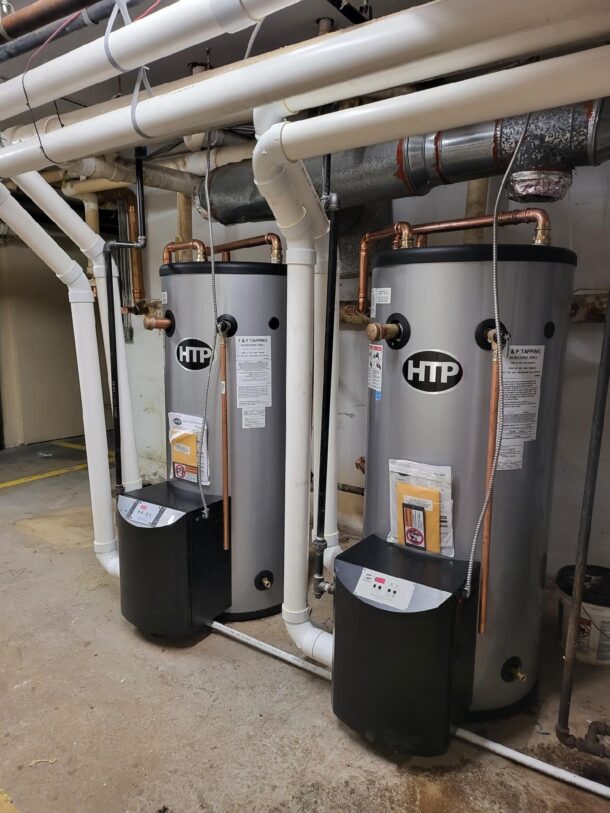
Photos by Affordable Fixes Heating Cooling Plumbing
Before Savkin chose the HTP Phoenix units, he explored other possibilities. “These HTP units were new to us, but we wanted a high efficiency, fast recovery water heater. If we had used another system, we would have to put in at least 3 units,’’ Savkin said. “We saved the customer about $12,000 by selecting this system.”
To complete the in-depth project, Savkin deployed a team of four plumbers and a debris scrapper. The initial phase involved the deconstruction and removal of the current units.
The second step proved to be just as demanding as the first step. Electrical wiring, new exhaust and gas lines were all components required for the second phase, due to the new system requiring fewer heating units.
John Monaghan, a HTP National Training Manager assisted the project by evaluating the building’s heat requirements and proposed installing two Phoenix 119-gallon tanks. “That not only saved the building owner a lot of money, but it also allowed us make the installation a little bit quicker,” Monaghan said.
Placing the tanks in the hotel’s basement was no easy task throughout the setup process. “It was a very tight fit. We were fortunate to have an elevator handy,’’ Savkin said. “We had to disassemble the new units, put them in a box, put them in the elevator and then re-assemble them. If there had not been an elevator, we would’ve gone old school and roped them down.”
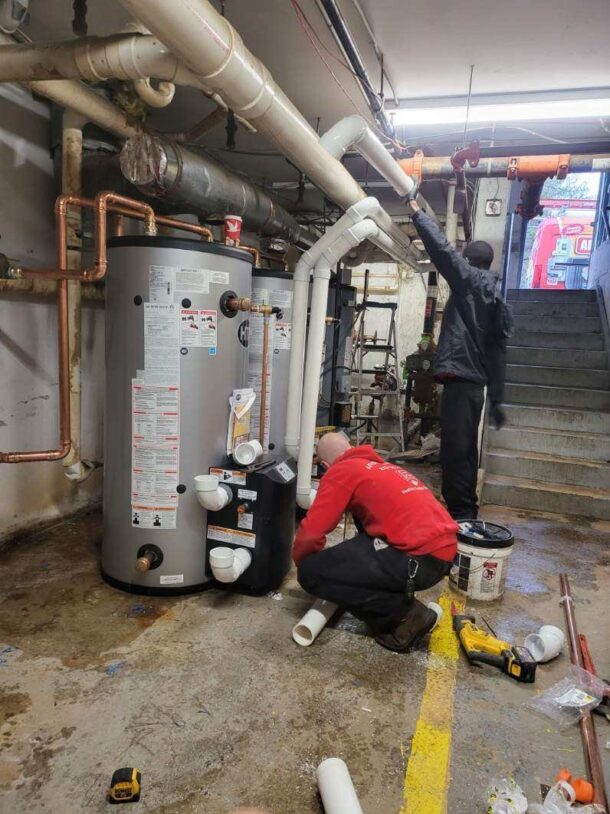
Workers from Affordable Fixes Heating Cooling Plumbing removed four water heaters and installed two HTP Phoenix 119 gallon tanks. Efficiency, durability and fast recovery factored into the decision to install the HTP products.
The selection of the HTP Phoenix water heaters was influenced by several reasons. The water heaters feature energy efficiency, durability and fast recovery that provides thermal comfort for hotel guests in a cost-effective way for the hotel owner.
“We didn’t know much about them, but we recently had training with them and I really liked their efficiency,’’ said Savkin, who has been in business in the Philadelphia area for more than three decades. “They were a great fit with a nice integrated control and easy to replace.”
Boasting a thermal efficiency rating of 96, the HTP Phoenix effectively uses 96 cents of every dollar towards heating purposes. On the other hand, a standard efficiency unit has a maximum capacity of a 60 percent efficiency rating, making the HTP Phoenix a significant upgrade. Operating at a 5:1 turndown ratio, the HTP Phoenix’s modulating burner delivers productive system efficiency even when the load is low.
To prevent corrosion, the HTP Phoenix comes with a 316L stainless steel tank. Furthermore, the unit includes a 7-year warranty for residential use and a 3-5-year warranty for commercial purposes.
“Most times you’ll get 8-12 years out of units, but like anything else it depends how much you take care of it,’’ Savkin said. “I could see these lasting 12-20 years. It’s all about the maintenance of the equipment, but it’s important to look at the water quality, too. The hardness and chemicals of the water has a lot to do with the longevity of the system.”
Receiving emergency service requests is typical for many plumbers, including Savkin. Having no access to heat or cold water will irritate any hospitality owner or homeowner, particularly during peak season.
“When we first looked at this project, we gave the owner a price and he didn’t get back to us right away,’’ Savkin said. “Then he called back and said he needed to have it done immediately. It’s an occupied hotel, and we are right around the corner. With the snow, the holidays and people traveling, this could have been a bad situation for him. We were glad to help him out and fix it quickly.”
Brian Giardina writes on a wide range of trade industry topics for publications throughout the United States.

Mechanical Hub recently spoke with Danielle DeBoe Harper, senior creative style manager, Moen, regarding the latest trends in kitchen & bath. As Harper explains, as two of the highest traffic areas of the home, maintaining and upkeeping a refreshed, clean, stylish kitchen and bathroom are top priorities for consumers. It goes a step further taking Read more
Mechanical Hub recently spoke with Danielle DeBoe Harper, senior creative style manager, Moen, regarding the latest trends in kitchen & bath. As Harper explains, as two of the highest traffic areas of the home, maintaining and upkeeping a refreshed, clean, stylish kitchen and bathroom are top priorities for consumers. It goes a step further taking into consideration the desire for more personal expression and customization right now. The following is an exclusive Q&A with Moen’s Harper.

MH: I just saw a report by the NKBA that remodeling will sustain the K&B industry for 2023. Does Moen agree with this assessment? What other factors are influencing the market for 2023 K&B?
HARPER: People continue to look for unique ways to meet their own needs inside the home from design to plumbing. The expansion of Moen products over the last year and throughout 2023 emphasizes the growing demand for more options in the kitchen and bathroom. Consumers are looking for spaces and products that meet their design preferences but also offer enhanced functionality. An example of this is the Smart Faucet with Motion Control that allows consumers to elevate how they move about their kitchen with smart technology, while increasing style.
MH: Are any colors or finishes dominating the K&B landscape this year?
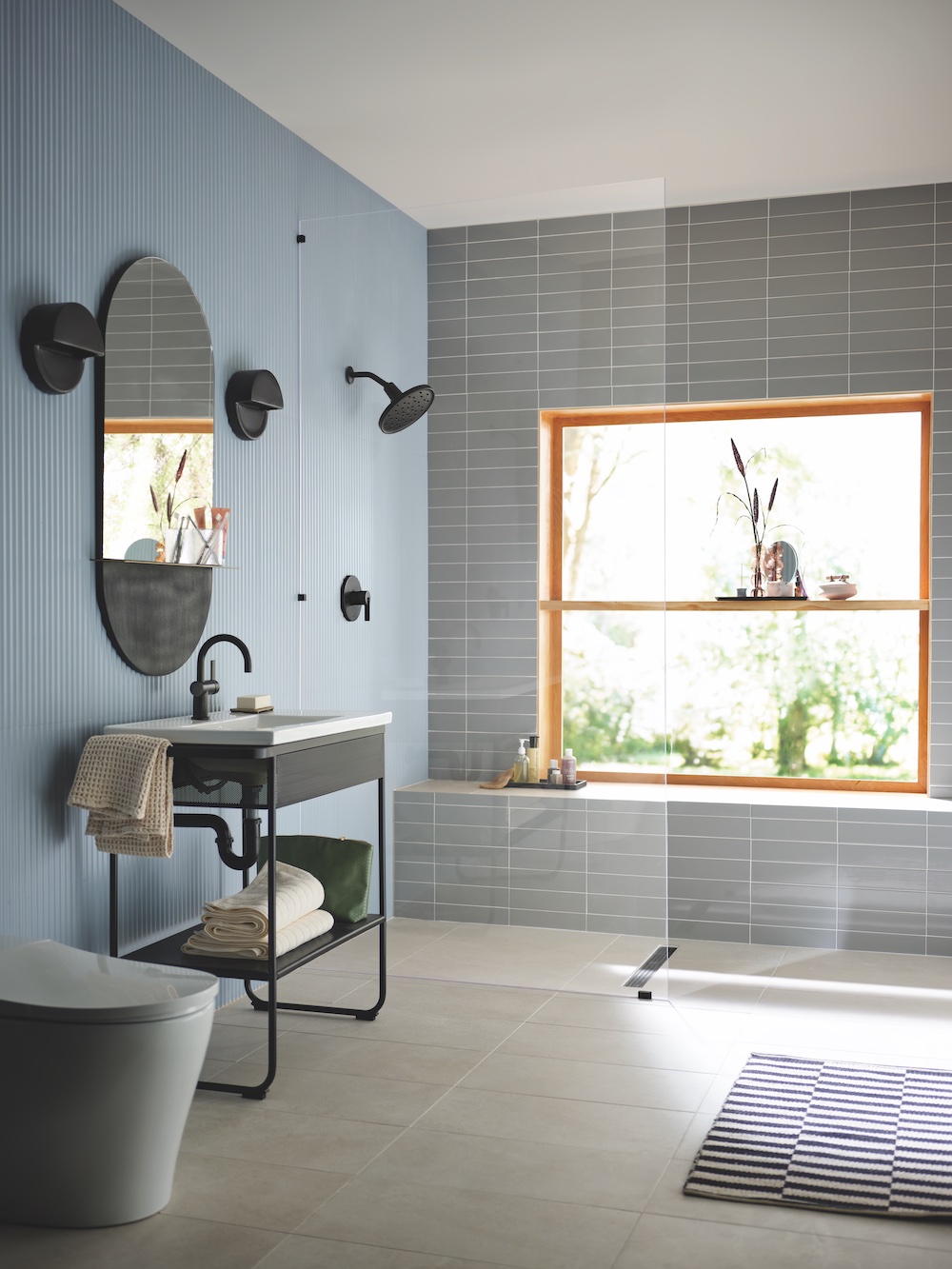 HARPER: Moen is seeing Matte Black finishes on fixtures in the bathroom and kitchen become increasingly more popular. With a bold, dramatic finish like Matte Black, fixtures can take a room to new depths, heightening both classic and contemporary designs. Additionally, the finish is a simple way to elevate more minimalist collections to the very on-trend industrial chic style, making it a very versatile design.
HARPER: Moen is seeing Matte Black finishes on fixtures in the bathroom and kitchen become increasingly more popular. With a bold, dramatic finish like Matte Black, fixtures can take a room to new depths, heightening both classic and contemporary designs. Additionally, the finish is a simple way to elevate more minimalist collections to the very on-trend industrial chic style, making it a very versatile design.
Along with Matte Black, the trend of personalizing fixtures is hitting new heights. By mixing metals and providing more options to customize your sink, adding a brushed gold escutcheon to a matte black bathroom faucet easily adds extra flair and personality to the room’s design.
In terms of color, we’re going to continue seeing both the layering of neutral and natural tones as well as the inclusion of bold pops of color like cobalt and citrus tones.
MH: Piggybacking off of that, what is trending as far as consumers looking at fixture styles? (Contemporary, modern, traditional, farmhouse, retro, etc.)
HARPER: Moen is finding a greater desire for fixture styles that can fit any room aesthetic. To encompass this idea, homeowners are looking toward fixtures that lean more transitional to meld together both traditional and modern pieces for a clean, comfortable, contemporary look.

As we go further into 2023, the kitchen and bathroom spaces are focusing on combining styles to create one unique design that helps homeowners encapsulate their own personal tastes and lifestyles. An example of this is the new TenonTM collection. This collection brings a touch of warmth to the contemporary kitchen, while offering the modern functionality consumers need and enjoy. The tall stature and the teak wood handle make these faucets an eye-catching addition to the sink, while offering the consumer a sense of customization.
MH: Can you address Moen’s sustainability initiatives?
HARPER: Moen takes pride in innovating and designing products with sustainability top of mind. This is why we have created Mission Moen. Mission Moen is our promise to protect and preserve the world’s most precious resource — water. Our goal with Mission Moen is to save one trillion gallons of water and repurposing 2,000 tons of ocean plastic by 2030, all while helping consumers enjoy water even more.
At Moen, we are driven to deliver outstanding water experiences inside and outside the home to celebrate water’s power and beauty, but also to protect the water of tomorrow. By creating products that save water effortlessly while improving how you experience it, we’re making your interactions with water even more meaningful without ever having to compromise style.
MH: Let’s talk functionality. I know Moen has some very unique offerings such as eBidets, eToilets and Workstation sinks. Can you talk about those and any other products/services coming soon?
 HARPER: Moen is focused on creating the ultimate experience for consumers. This goes beyond faucets. We know how important each touch point with the water that flows through your pipes is and how that impacts daily routines. We’ve dedicated our focus streamlining tasks at the sink with Workstation Sinks, bringing comfort and cleanliness to a new level with eBidets and eToilets. With features such as water pressure, temperature control and endless instantaneous warm water, eBidets and eToilets deliver the ability for each user to customize their own experience in the bathroom.
HARPER: Moen is focused on creating the ultimate experience for consumers. This goes beyond faucets. We know how important each touch point with the water that flows through your pipes is and how that impacts daily routines. We’ve dedicated our focus streamlining tasks at the sink with Workstation Sinks, bringing comfort and cleanliness to a new level with eBidets and eToilets. With features such as water pressure, temperature control and endless instantaneous warm water, eBidets and eToilets deliver the ability for each user to customize their own experience in the bathroom.
In 2023, we’re excited to share our newest expansion to our Smart Water Network with enhanced interoperability in our products. This provides more integrated and advanced experiences when you have more than one Moen Smart Water product, such as the Flo Smart Water Monitor and Shutoff, Smart Faucet and Smart Shower. As a result, Moen is giving consumers more power over their water than ever before. The Smart Water Network is also an integral part of Mission Moen by proactively protecting the home from leaks and reducing water waste with built-in water conservation every time you turn on the faucet or shower. We’ll also be launching a new Smart Sprinkler Controller that helps automate lawn irrigation and provides even more control over your home’s water.
Along with the expansion of the Smart Water Network, Moen is excited to launch new styles and innovations, such as new laundry faucets- and water filtration faucets to improve how our customers enjoy their home, while achieving even more customized experiences.
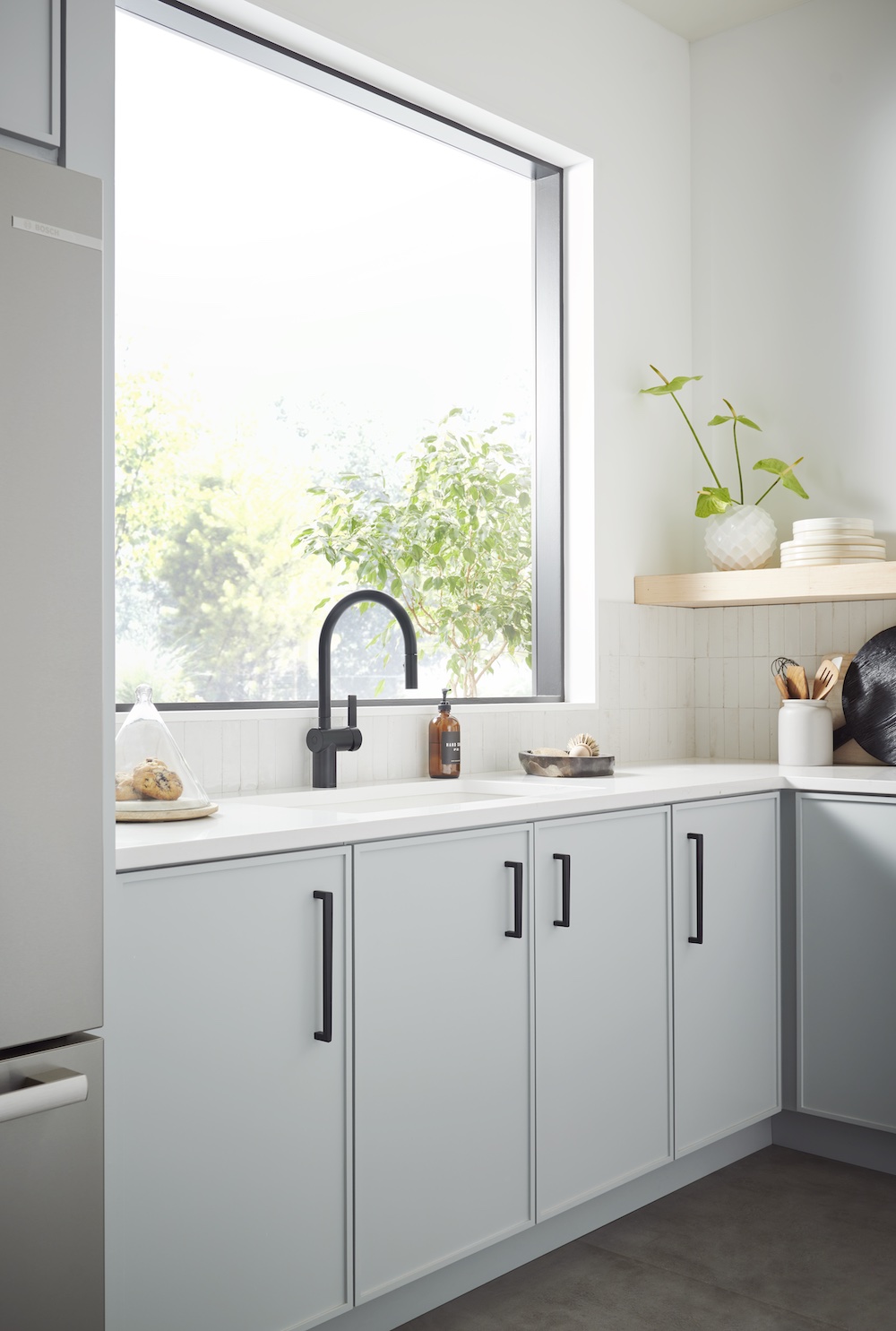 MH: Finally, let’s talk vision of space. The kitchen has always been the heart of the home and the bathroom (master) has long been considered a place of respite and relaxation. When designing these spaces, is it still a matter of personal preference, wellness, functionality, etc.? Explain.
MH: Finally, let’s talk vision of space. The kitchen has always been the heart of the home and the bathroom (master) has long been considered a place of respite and relaxation. When designing these spaces, is it still a matter of personal preference, wellness, functionality, etc.? Explain.
HARPER: As two of the most used spaces in the home, the kitchen is the hub of entertaining during family gatherings, while the bathroom is used as the ultimate escape to reset at the end of a busy day. When designing for these spaces, it’s important to carefully customize each room to meet your individual preferences and needs. This ties into the overarching trend of home holistic wellness which we see continuing through 2023 and is heavily influenced by the home embodying the lifestyles and habits of the consumer in each room. Designing a kitchen and bathroom with functionality, wellness and versatility top of mind allows homeowners to choose what their environment says about them to anyone who walks through their front door.

AHR 2023 is a wrap, and the biggest U.S. HVAC show marks the 20th time—minus the COVID year—that I have attended this great event. A huge shoutout to the Stevens family for organizing such a great experience. Also, huge props to Nicole Bush and her press team for helping the trade press throughout the event Read more
AHR 2023 is a wrap, and the biggest U.S. HVAC show marks the 20th time—minus the COVID year—that I have attended this great event. A huge shoutout to the Stevens family for organizing such a great experience. Also, huge props to Nicole Bush and her press team for helping the trade press throughout the event, and keeping them fed and hydrated.
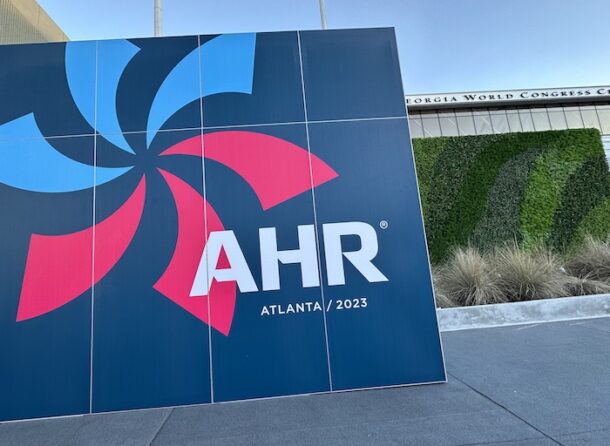
Now that we’re all back home safely—I hope—we can digest the event and gain a better perspective of what transpired over these past three days. The numbers haven’t been shared yet attendance-wise, but it was a hugely successful event, especially coming through what some call the “COVID years,” where traveling came to a stop—with more people now connecting again.
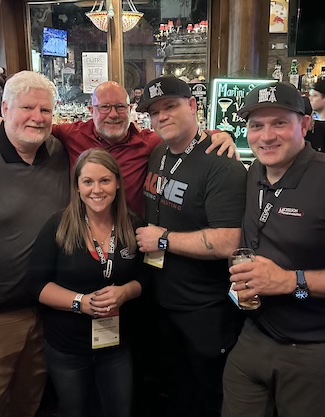
The MH team, and some old guy.
I would be remiss if I didn’t mention some of the manufacturers’ investment in after parties that are always a hit! For the Mechanical Hub crew, for example, it was Taco, Burnham/U.S. Boilers, Rheem, RLS, Franklin Electric, RIDGID and Viega.
From what I heard, over and over again, is that Atlanta just isn’t the most optimum place for a trade show, if I can be perfectly honest. Listen, Atlanta is a wonderful city with plenty to do and many fine places to eat and drink, but the traffic, and the infrastructure to support such a trade show, need to improve. But hey, it was 65 degrees and sunny, and relatively quick flight to the show. So, I suppose it does have its advantages. Where does Atlanta rank for you? Atlanta, Chicago, Orlando, Las Vegas. Perhaps it should be noted that the sooner you book accommodations for a show, the more strategically you will be for rides, dinners, walking, etc.
Nevertheless, I can’t tell you how many people sniped about the layout of the show floor—getting from one end of Exhibit Hall C, and its meeting rooms, to the other end of Exhibit Hall B, and its meeting rooms was a hike. My feet, and the 55,000 steps according my trusty Fitbit, were a testament to that.
Also, as I mentioned, 20 years of covering the event, it’s nice to see the changing of the guard with some young talent in attendance, more pointedly—and I know some don’t like to be referred to as this—social influencers. They cover the floor tirelessly to promote the show and new products. In fact, I was lucky enough to attend the social media breakout on the last day. Ten of the brightest influencers graced the stage to talk about their experiences and the importance of social media, and what it means to be an influencer.

HVAC & Social Media: Strengthening the Trade with a Community Mindset—from l to r: Ben Poole @hvactactical, Jamie Christensen @northwest_hvac, Aaron Bond @bond_aaron, Michael Flynn @flynnstone1, Jeff DeMassari @jeffjdemhvac, Jessica Bannister @hvacjess, Rachel Sylvain @hvacrara, Chris Stephens @hvacrvideos, Eric Aune @mechanicalhub, and last but not least, Omar Harris @omartheplumber.
We also were fortunate to share the stage with some of the best podcasters on the planet, as our Make Trades Great Again, hosted by Eric Aune and Andy Mickelson, featured three podcasts during show hours to much fanfare. Guests included representatives from RIDGID, NIBCO, Navien and guest Travis Albaire, T.A.P. Plumbing and Heating. Check them out wherever you stream. Also, the Appetite for Construction podcast, hosted by John Mesenbrink and Tim Ward, featured two podcasts, which featured guests from Bradford White, Rheem, Spirotherm, Lochinvar, and Danny G and Louie the Boiler Man. These recording will be launched within a couple of weeks. In the meantime, check out these podcasts wherever you like to stream stuff, or you can always find them right here on our site.
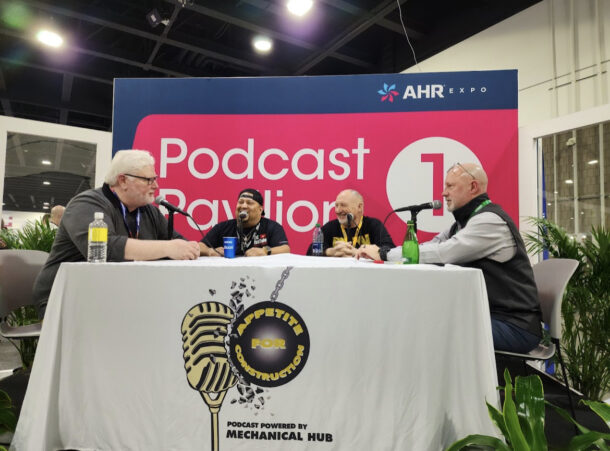
The Appetite for Construction Podcast with guests Louie Medina @louietheboilerman and Danny Gronendyke @howitbewithdannyg

The Make Trades Great Again Podcast with guests Michael Provenzano, director of pressing and Jim Vild, Atlanta territory manager, RIDGID.
As far as the latest and greatest, you couldn’t get far without seeing the future. Electrification, decarbonization, hydrogen technology are making waves as more heat pumps, electric furnaces, electric boilers, hybrid heat pumps and prefabbed distributed pumping methods are front and center; the latest in thermostats, and a plethora of other products that can talk to each other, and you, with a WiFi signal—from circulators, forced air furnaces to tankless water heaters. New or improved pipe joining methods through press technology, push-to-connect fittings, fusion welding, advances in pipe bending and cutting drew eyes. Listen, if it’s in the HVAC industry, it’s at AHR.

Check out Mechanical Hub websites, social media (@mechanicalhub & @plumbing_perspective on Instagram and TikTok, Facebook and LinkedIn.) and check out our ever-growing YouTube for products from the show.
Next year’s AHR Expo will take place in Chicago, my back yard, January 21-24 (2024). Again, check back for updates on the show or any other breaking announcements surrounding the event.

Mechanical Hub kicks off its 2023 Industry Forecast series with good friend, Bruce Carnevale, President and CEO, Bradford White Corporation. You would think coming out of a global pandemic there might be signs of positive growth. But hold your horses, as they used to say. For the economy to back on the right track, it’s going Read more
Mechanical Hub kicks off its 2023 Industry Forecast series with good friend, Bruce Carnevale, President and CEO, Bradford White Corporation. You would think coming out of a global pandemic there might be signs of positive growth. But hold your horses, as they used to say. For the economy to back on the right track, it’s going to take some time, and steady leadership.
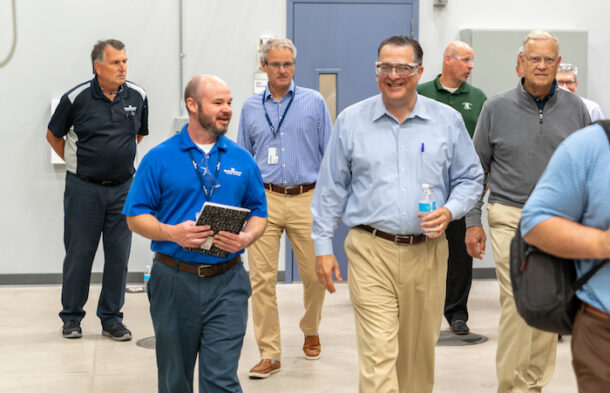
Bruce Carnevale, center, right, holding water bottle
MH: I’ve heard that the first half of 2023 might be a bit bumpy, how do you see 2023 shaking out and the short-term economy in general?
Carnevale: I’m actually a bit more concerned about the 2nd half of 2023, John. While most economic indicators are not good right now, some are headed in the right direction so there feels like there is a bit of stability for now. Even though it has moderated the past couple of months, inflation continues to be stubbornly high, but the jobs market had been surprisingly strong. I’m not sure everyone understands that when the inflation rate falls from 9.1% to 6.5% (for current US inflation info), that doesn’t mean prices have fallen. It means that prices are increasing at a lesser rate, but they are still increasing at over three times the Fed’s target rate!
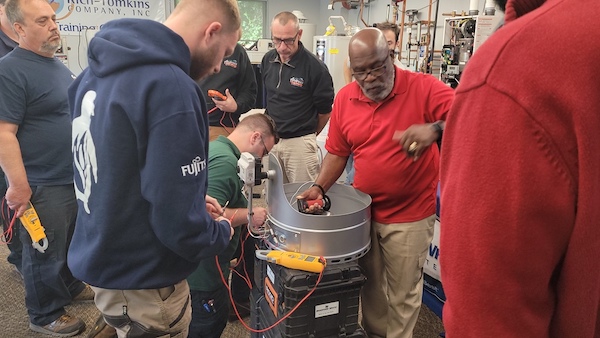
I believe that historically high prices have slowed demand, and helped slow the pace of inflation more so than the Fed’s rate increases have up until now. It takes time for the Fed’s actions to take hold, and I think we will see the impact of that later this year in the form of a significant slowdown. If not technically a recession, I think it will feel like one to the American consumer. I hope that the Fed becomes less aggressive with its 2023 rate increases.
I mentioned that the labor market has remained strong, but my sense is that is changing fast…every day we are hearing of new layoffs at some of the country’s largest employers. This is a clear indication of how much demand has slowed, and I think that will continue into the 2nd half of 2023.
MH: What causes you pause for concern? (Steady inflation, supply chain, housing starts, interest rates, foreign factors, etc.)
Carnevale: All of the above! But what concerns me most is labor availability. I think most companies would say the shortage of workers is still their number one business concern, despite all of the other challenges you mentioned. I am hopeful that the slow down in the labor market will bring the number of available workers and the number of job openings back to equilibrium.
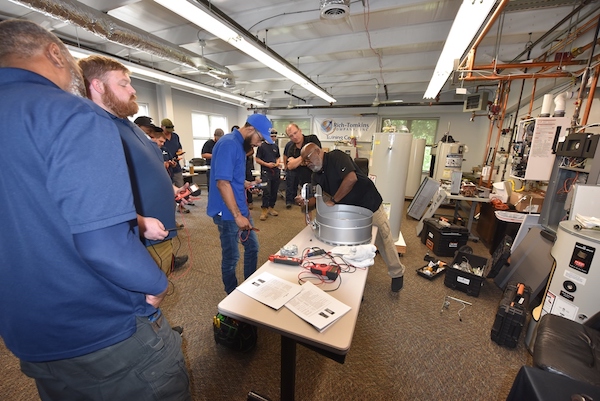
The global geopolitical instability also keeps me up at night. We all saw the effects of Russia’s invasion of Ukraine and the ensuing war. That continues to be impactful to supply chains and economies, especially in Europe. But there are several other hot spots in the world that could erupt, whether it be wars or new COVID outbreaks, and have dramatic impacts on the global economy and supply chains.
MH: Are you seeing any signs of positivity? If so, where?
Carnevale: Absolutely. I’m actually somewhat bullish for our business for 2023. As I’ve mentioned in articles and presentations over the last year and a half, we’ve been in a period of correction from the over buying of water heaters in 2020 and 2021, but the worst seems to be behind us. It is also great to re- engage with our customers and business partners in person, and their businesses have mostly normalized to what they were pre-pandemic.
MH: Without getting too deep into the weeds, how do regulations help or hinder the manufacturing process, and are there any significant ones coming down the pike of which contractors should be aware?
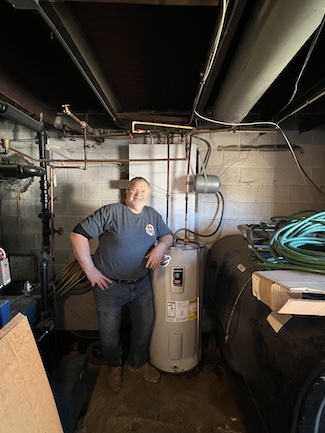 Carnevale: Really, John? How long do we have? If your question is specific to the impact on manufacturing processes, significant regulations which require manufacturers to build entirely new models are a huge challenge. Imagine that you have a factory which builds products that are currently compliant, and then five years from now, you have to build a completely different products to meet new regulations. That sounds like a sufficient amount of time, right? But you have to continue to produce the current product while you are re-tooling the factory to build new product. There is no practical way that you can just remove all the old equipment, roll in the new equipment, flip a switch to stop making the old models and start making the new models on the date the new regulations take effect. We expect that the Department of Energy’s upcoming NAECA 4 regulation will require us to do just that. We’ll figure it out, but it’s a significant challenge and it will be very expensive.
Carnevale: Really, John? How long do we have? If your question is specific to the impact on manufacturing processes, significant regulations which require manufacturers to build entirely new models are a huge challenge. Imagine that you have a factory which builds products that are currently compliant, and then five years from now, you have to build a completely different products to meet new regulations. That sounds like a sufficient amount of time, right? But you have to continue to produce the current product while you are re-tooling the factory to build new product. There is no practical way that you can just remove all the old equipment, roll in the new equipment, flip a switch to stop making the old models and start making the new models on the date the new regulations take effect. We expect that the Department of Energy’s upcoming NAECA 4 regulation will require us to do just that. We’ll figure it out, but it’s a significant challenge and it will be very expensive.
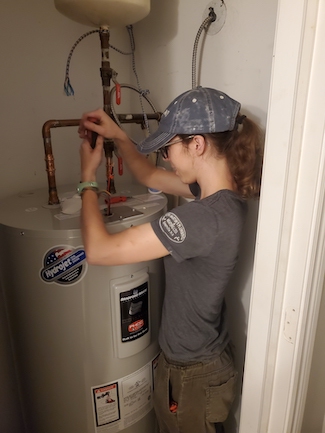 Contractors need to prepare for a significant shift to heat pump water heaters, condensing commercial gas water heaters, and condensing boilers. Every indication is that is what the DOE will require, and several states are moving in that direction even faster and more aggressively. Some municipalities have already banned gas water heaters, and some have announced that they will within the next 5 to 10 years. I would encourage contractors to really dig into the regulations pending in their market area and prepare accordingly.
Contractors need to prepare for a significant shift to heat pump water heaters, condensing commercial gas water heaters, and condensing boilers. Every indication is that is what the DOE will require, and several states are moving in that direction even faster and more aggressively. Some municipalities have already banned gas water heaters, and some have announced that they will within the next 5 to 10 years. I would encourage contractors to really dig into the regulations pending in their market area and prepare accordingly.
As it relates to contractors, what is your “message” to them as it relates to your company and its line of products and services? Last year, Bradford White celebrated the 30th anniversary of our commitment to the professional installation of our products. As stated in those messages, we will remain “For the Pro” with the products, services and support we bring to our contractor customers. We will strive to continue to be your best partner for success in your business.
MH: What specifically does BW have its sights set on in 2023? (New products, working with assocs. for workforce development, etc.)
Carnevale: Despite some of the headwinds that still exist with regard to the supply chain and the economy, we are excited about 2023. As you know, toward the end of last year, we released our new formula for Vitraglas tank lining where it now includes Microban. The excitement around that has been tremendous and we expect Vitraglas with Microban to help our customers win against the competition in both residential and commercial water heaters. We also have several other new products that launched in 2022 and even more to be announced in 2023.
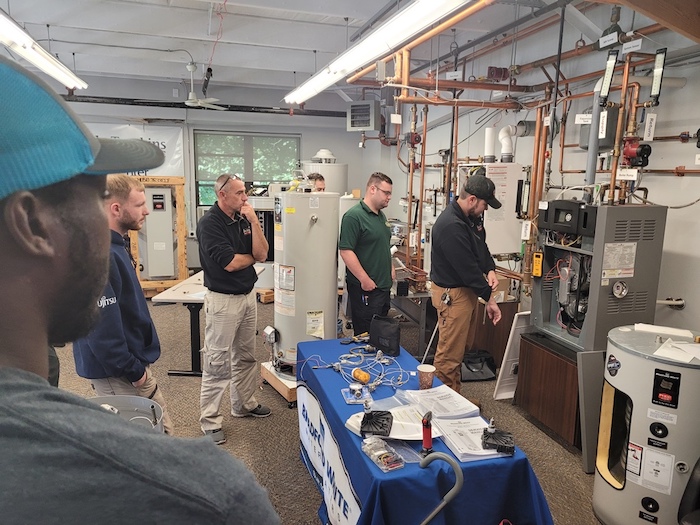
We are also excited to be expanding the reach of our Industry Forward (IF) program, which was created to put a focus on the wonderful career opportunities available in our industry. As you know, all of us in this industry have workforce challenges so we expect to get more traction for IF in 2023 to shine a brighter spotlight on this challenge and increase awareness of our industry’s career opportunities to the general public.
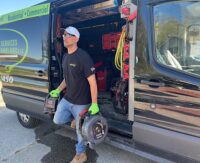
Family is life. Robert Broccolo Jr. (@prodrains), owner/operator of Professional Drain Services of Southern New England, LLC, Westerly, R.I., has much to be thankful for. He’ll be the first to tell you that he has the most amazing fiancée, Tiffani, whom he can’t wait to marry, and he gushes over his beautiful five-year-old daughter Isabella Read more
Family is life. Robert Broccolo Jr. (@prodrains), owner/operator of Professional Drain Services of Southern New England, LLC, Westerly, R.I., has much to be thankful for. He’ll be the first to tell you that he has the most amazing fiancée, Tiffani, whom he can’t wait to marry, and he gushes over his beautiful five-year-old daughter Isabella. Oh, and he is expecting a baby boy—Robert Broccolo III—this May.
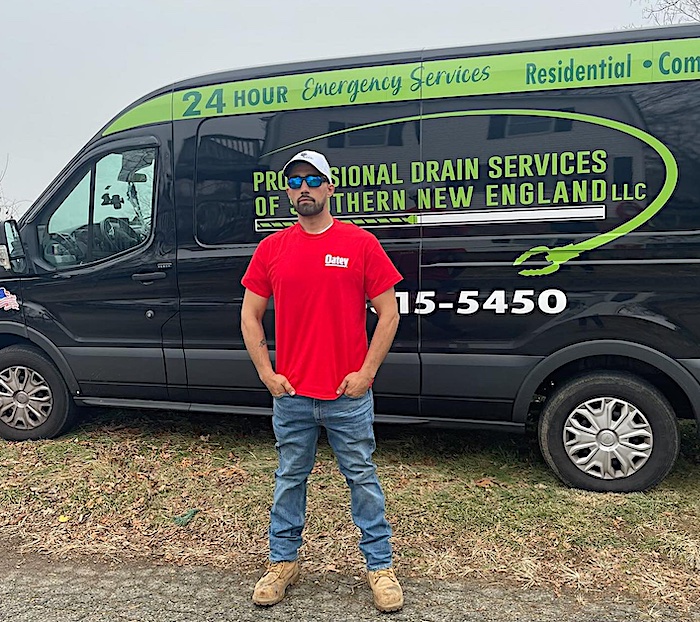
But that’s what it’s about, right? Hard work and long days to pay the bills to carve more time with family, and to leave them in a better place financially. It’s that work/leisure balance that is so important. “It’s hard to do so but it all depends on your personal goals. My goal is to leave my kids’ grandkids an empire, but that requires tons of hard work and time each day,” says Broccolo. “I try to balance the work day so I’m home by the end of the day before the kids go to bed, spend time on weekends, and plan vacations throughout the year. As much as I’d love to be home more, I want to build for my family and future.”
 Getting Started
Getting Started
Broccolo recalls his journey into the industry when he applied for a job with a local plumbing contractor who was hiring workers for a big project. “Also, I had an interest in plumbing as my father is a real estate investor and always had a very good understanding of plumbing and heating. It was one of the skills he mastered over the years so I wanted to learn and make him proud, build some value to myself, and be able to help my him in his real estate ventures. I got the job and shortly thereafter, became an apprentice plumber for that company, learning lot of different aspects of the trade,” says Broccolo.
Growing Exponentially
Broccolo started off with a basic pickup truck and enclosed trailer; he acquired the basics needed to attempt a drain cleaning company. Subsequently, hard work and dedication to customer service has allowed Broccolo to grow his business by utilizing his social and networking skills he believes he gained from the many years— since the age of 10—working as a caddy at a few private golf courses. “It helped me spread the word of who I was and what I offered. I believe networking can be a very valuable tool if used properly.”
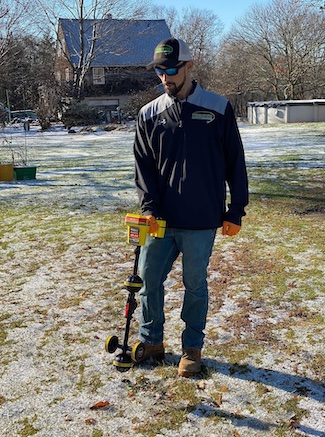 Broccolo has been in the plumbing industry for a little more than 10 years now, as he worked as a plumber for a local plumbing and mechanical contractor for years. It was around this time working with other contractors that Broccolo was given an opportunity to show what he could offer. He decided to move forward with starting his company in 2017. Specializing in sewers and septic, underground rehab, excavations and cured-in-place-pipe (CIPP) lining, Broccolo’s certifications include CT P7 Plumber, RI Underground Utility Contractor, CT Septic Installer, RI Septic Installer, RI and CT Septic Pumper, and RI Registered Septic Inspector. “From there, the growth hasn’t stopped. We now have the ability to do anything when it comes to sewer and septic,” says Broccolo.
Broccolo has been in the plumbing industry for a little more than 10 years now, as he worked as a plumber for a local plumbing and mechanical contractor for years. It was around this time working with other contractors that Broccolo was given an opportunity to show what he could offer. He decided to move forward with starting his company in 2017. Specializing in sewers and septic, underground rehab, excavations and cured-in-place-pipe (CIPP) lining, Broccolo’s certifications include CT P7 Plumber, RI Underground Utility Contractor, CT Septic Installer, RI Septic Installer, RI and CT Septic Pumper, and RI Registered Septic Inspector. “From there, the growth hasn’t stopped. We now have the ability to do anything when it comes to sewer and septic,” says Broccolo.
Going into year six with great success, Broccolo continues to expand the underground rehab side of the company. “My love for plumbing has been primarily focused on sewers since the start of my company. I’m constantly learning, going to trainings, trade shows, expos, etc., to gather as much info to continue to grow the company and services we offer,” says Broccolo. “
 Looking Up
Looking Up
Broccolo has had a few mentors in his plumbing journey, with his father being his hero and No. 1 mentor. “He’s always guided me in the right direction and given solid advice,” says Broccolo.
There are others, too. “My old boss Mike Loffler and Steve Antoch, and an amazing man I would caddy for each weekend at the golf course,” says Broccolo.
Each person in some way helped guide Broccolo and mentor him in different ways, sometimes not even knowing they were doing so. “So, paying it forward, I try to be my best self to help others in the industry; I believe if we all work together, we can all grow learn and do better, and that in turns makes the industry better,” says Broccolo.
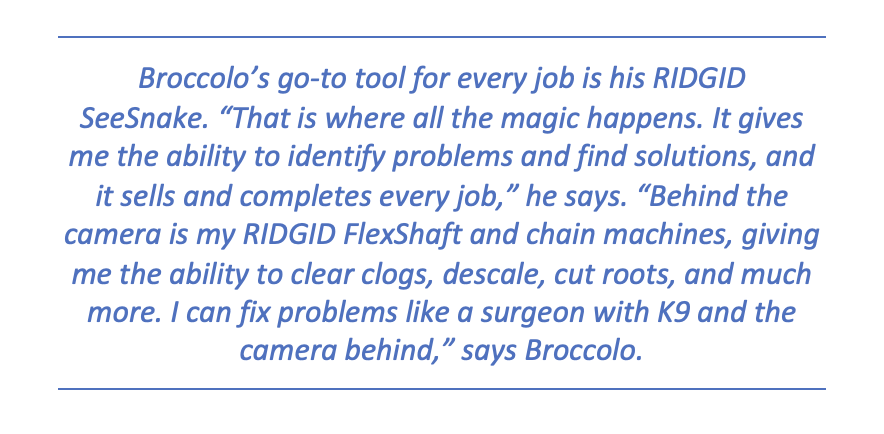
Promote the Trades
According to Broccolo, the trades have been given a negative image for a long time, and that there are great jobs pay and opportunity in all aspects of the trades. His message to those kids thinking of entering the trades would be—give it a chance! “Don’t be fooled with the have-to-go-to-college mentality. I was caught in that mentality when in high school; you were considered a failure if you didn’t go to college. In fact, I went to college and it just wasn’t for me. I wish I had the ability to get my hands in the trades sooner,” says Broccolo.
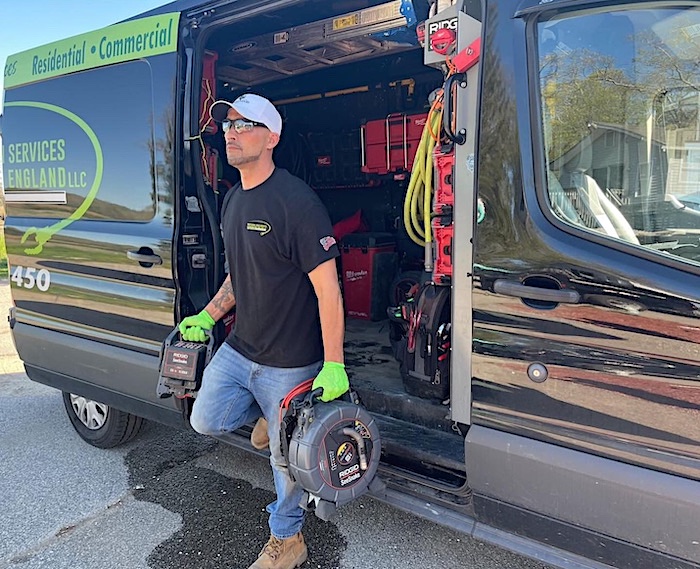
What message should we be sending then? “The industry could do better by working alongside the schools,” says Broccolo. “Same as a college fair or a military recruit booth, it would be amazing if there was a ‘Trade Day’ where different trades had the ability to be at each school once a year—featuring one-on-one time, the ability to answer and ask questions, and see the reality of the jobs vs. the perception of it,” says Broccolo.
Broccolo says that a local company could sign students for jobs the same as a college signs a student. Companies could then work apprenticeships with students and implement classes to help students see if the trades are for them vs. college. “Just like most things in life, you need to experience it in some way to know if it’s for you,” says Brocoolo.
Listen, some of the most challenging jobs for Broccolo are the underground rehab projects and CIPP installs, but working on pipes without digging and solving problems is very rewarding. “Nothing is more satisfying than getting the job done that most can’t and knowing you did it without being invasive to the property,” says Broccolo.

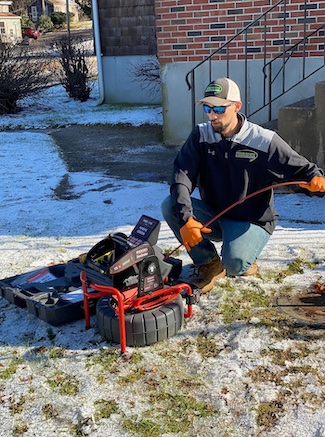 Getting Started
Getting Started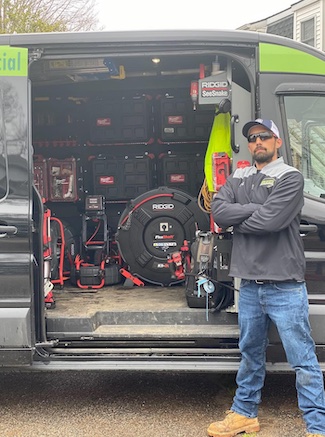 Looking Up
Looking Up